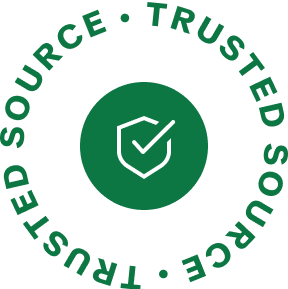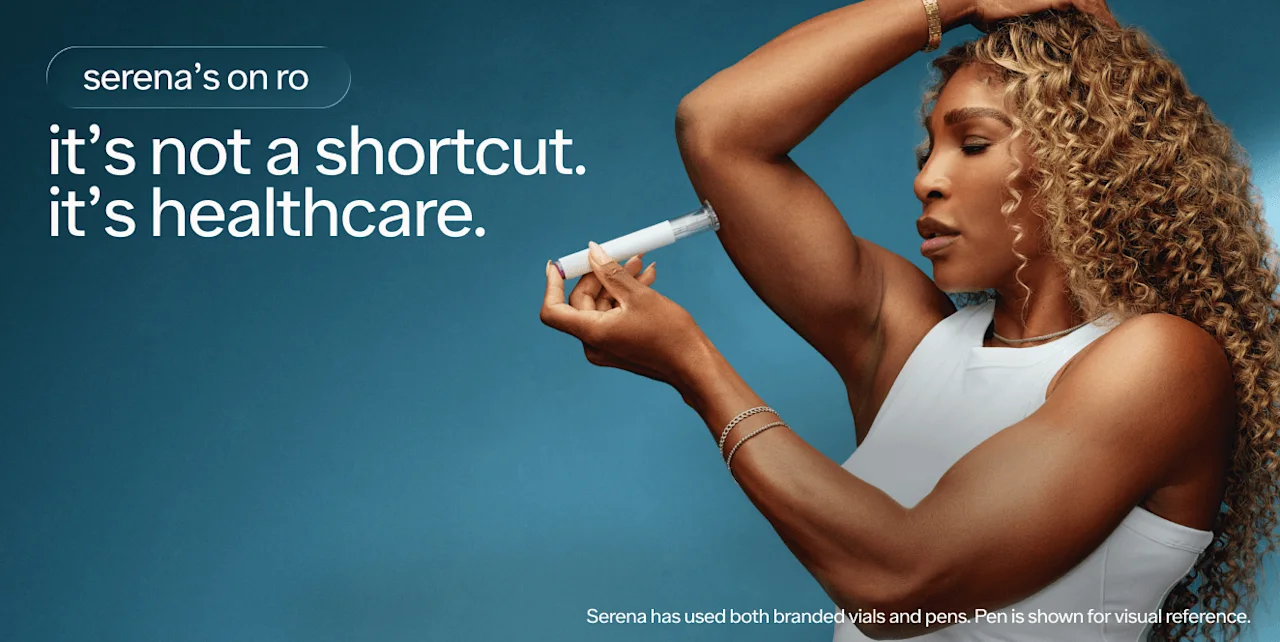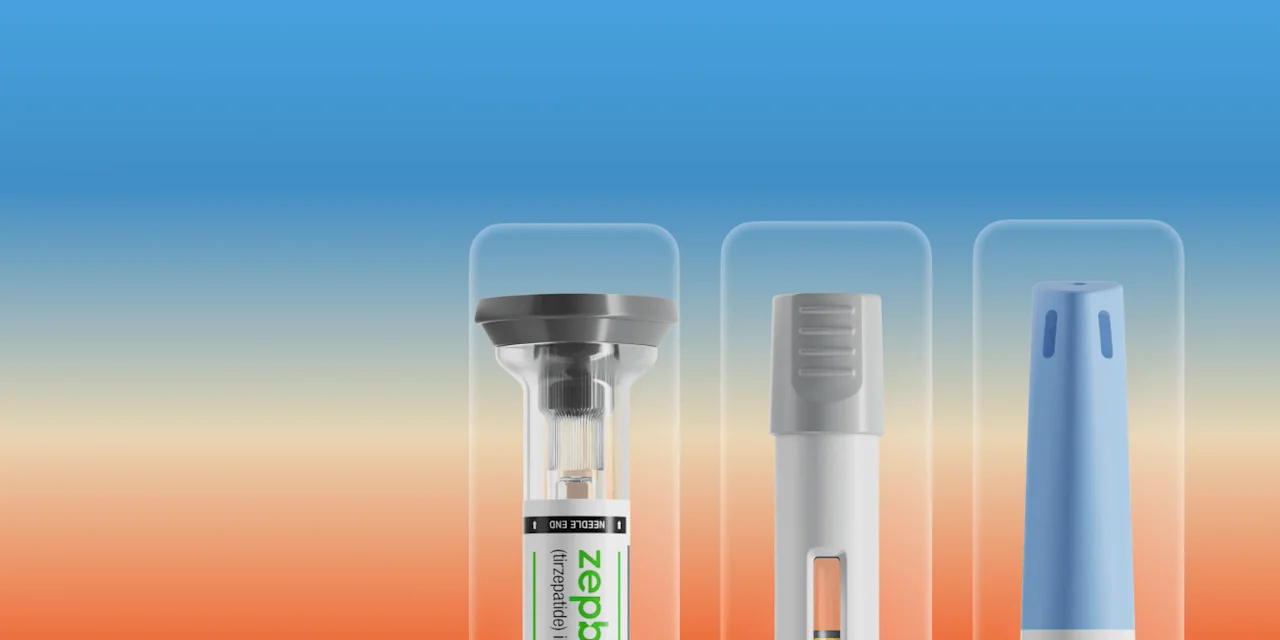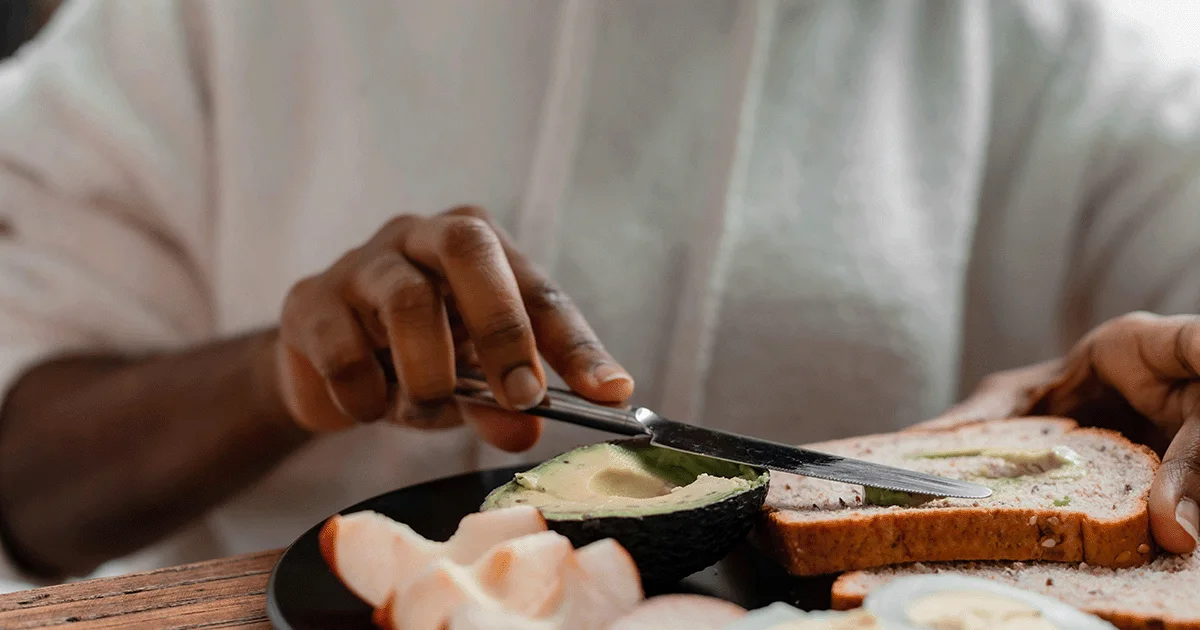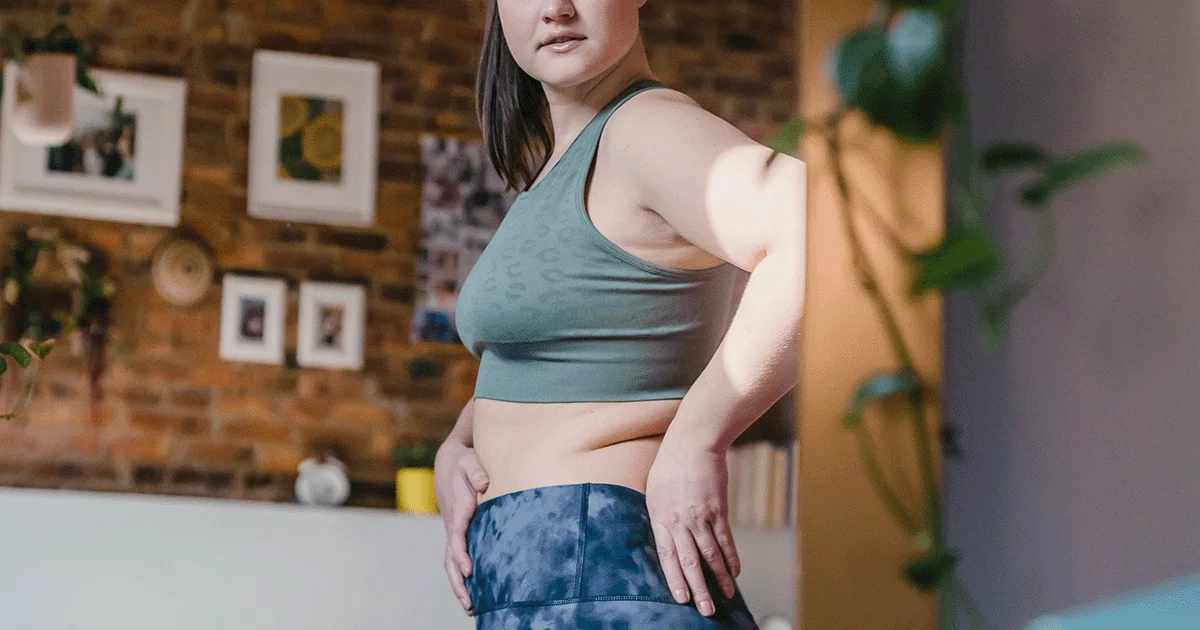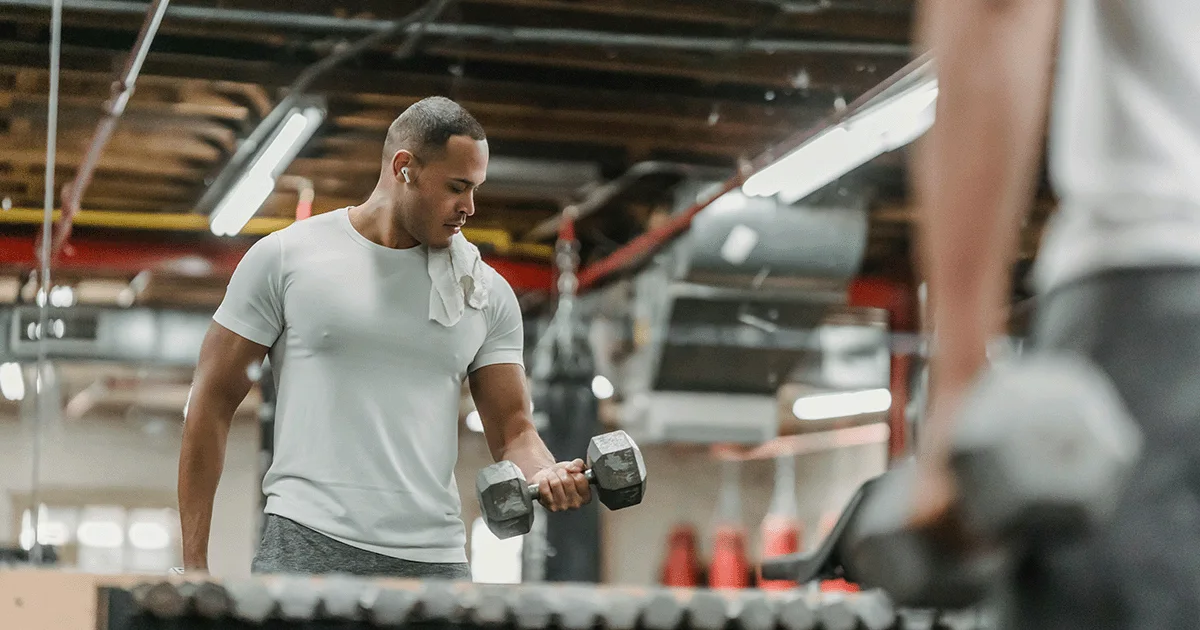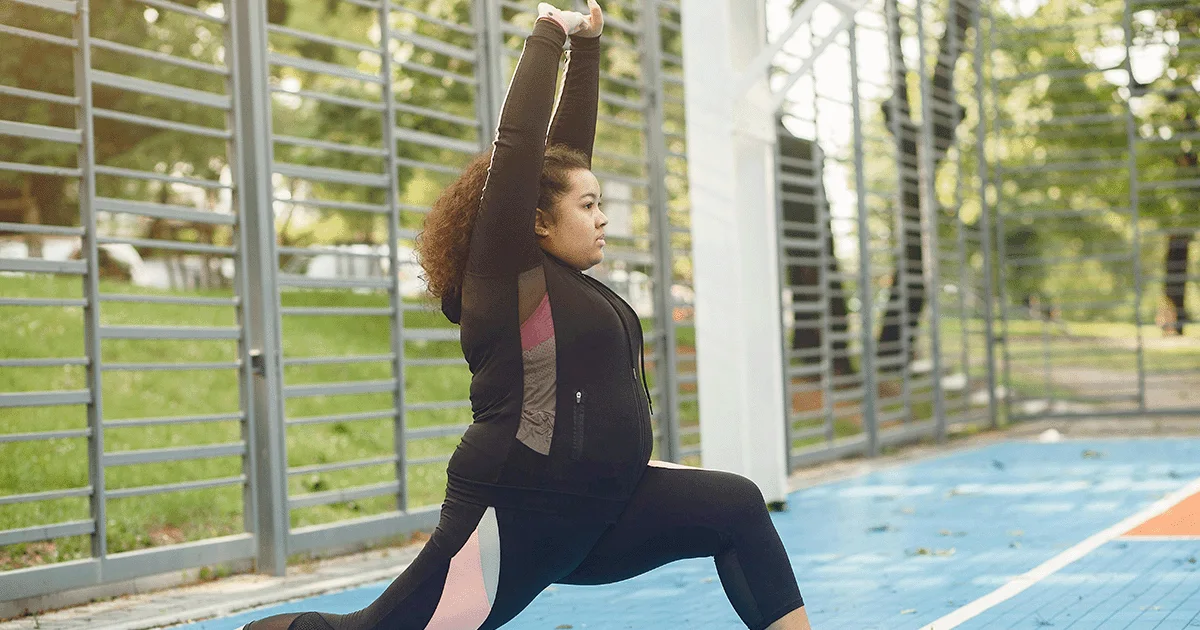Key takeaways
Volume eating involves consuming large quantities of low-calorie foods, typically with high water content.
High-volume, low-calorie foods include leafy greens, berries, watermelon, and lean proteins like chicken and tofu.
Volume eating can promote weight loss by increasing fullness and reducing appetite while also helping create or sustain a calorie deficit
Like any other diet or eating plan, volume eating may not be a fit for everyone, especially those with a history of disordered eating.
Here's what we'll cover
Here's what we'll cover
Here's what we'll cover
Key takeaways
Volume eating involves consuming large quantities of low-calorie foods, typically with high water content.
High-volume, low-calorie foods include leafy greens, berries, watermelon, and lean proteins like chicken and tofu.
Volume eating can promote weight loss by increasing fullness and reducing appetite while also helping create or sustain a calorie deficit
Like any other diet or eating plan, volume eating may not be a fit for everyone, especially those with a history of disordered eating.
If you’ve ever Googled tips and tricks for weight loss, you might have stumbled across a strategy called volume eating. The idea is to eat a lot of high-volume, low-calorie foods like leafy greens, fibrous vegetables, and water-rich fruits so you’ll feel full while consuming fewer calories.
The good news is that volume eating can help you lose weight (more on that below). But it’s important to do it in a way that still fuels your body in a healthy way.
Keep reading for everything you need to know about volume eating for weight loss, including the pros and cons, and a list of high-volume, low-calorie foods.
What is volume eating?
Volume eating is the practice of consuming large quantities of high-volume, low-calorie foods. Unlike some diet plans, volume eating doesn’t restrict how much you eat — just what you eat.
This strategy encourages you to eat large volumes of low-density (and often water-rich) foods to fill your belly and satisfy hunger.
Ultimately, volume eating can help you feel physically full while still reducing your daily calorie intake.
What is volume eating for weight loss?
“Volume eating can be an acceptable approach to weight loss,” says Mir Ali, MD, a board-certified general surgeon and bariatric surgeon.
That’s because volume eating can help you create a calorie deficit while still eating the same volume of food you usually would. When you’re in a calorie deficit — consuming fewer calories than you burn — your body starts burning stored body fat for energy. This often leads to weight loss.
One study found that volume eating can be just as effective as intermittent fasting for reducing body weight. However, for reasons unknown, study participants were more likely to adhere to intermittent fasting than to volume eating.
Bottom line: If you can commit to filling up on high-volume, low-calorie, nutrient-dense foods, this type of eating may help you lose weight.
Pros and cons of volume eating for weight loss
If you’re considering volume eating for weight loss, it’s important to first weigh the pros and cons of this approach. And it’s always a good idea to connect with a healthcare provider for personalized dietary advice.
Pros of volume eating for weight loss
Fewer hunger pangs. One study found that volume eating decreased hunger and appetite, even among participants with binge eating disorder.
Less focus on counting calories. Volume eating can free you from meticulously counting calories or macros. If you’re eating low-calorie, high-volume foods every meal, odds are that you’re consuming fewer calories than you did before you started volume eating.
Boosted fiber intake. Many high-volume, low-calorie foods — vegetables, popcorn, and oatmeal, for example — are also high in fiber. And fiber helps with weight loss by reducing cravings and decreasing appetite.
More vitamins and minerals (usually). Volume eating can increase your intake of fresh vegetables and fruits, which are packed with essential vitamins and minerals. If you’ve swapped out low-volume, high-fat foods like creamy pasta and fried chicken for voluminous salads and tofu or chicken breast, you’re probably consuming more vitamins and fewer calories.
Cons of volume eating for weight loss
Little direction on which foods to eat. Dr. Ali says his biggest concern with volume eating is that patients will focus on the wrong foods — or, in some cases, not eat enough of the right foods. With volume eating, it’s easy to fall into the trap of eating only foods like lettuce, cucumbers, popcorn, and watermelon. But a healthy diet should include protein and healthy fats, too. For a healthy low-calorie diet, Dr. Ali recommends eating primarily vegetables and proteins.
Potential for overeating. “Continuing to eat beyond the full point will typically result in still getting too many calories and not seeing much weight loss,” Dr. Ali says. If your goal is weight loss, aim for a calorie deficit of at least 500 calories per day.
Some people get gassy. Many high-volume, low-calorie foods are full of fiber. But a sudden increase in high-fiber foods can cause bloating, stomach pain, and flatulence.
May raise the risk of disordered eating. Noting the number of calories present in each food or food group can become an obsession that leads to disordered eating. For instance, fear of certain good groups is a sign of anorexia nervosa.
13 high-volume, low-calorie foods
High-volume, low-calorie foods are foods that typically contain a lower-than-average number of calories per serving. In many cases, high-volume, low-calorie foods contain a lot of water (e.g. lettuce, watermelon) or fiber (e.g. oatmeal, berries).
Here are 13 low-calorie, high-volume foods that are filling and nutritious.
1. Leafy greens
Leafy greens like green cabbage, spinach, and arugula are the perfect low-calorie, high-volume food. Case in point: A cup of raw spinach contains just 7 calories. But it also provides your body with a bit of calcium, iron, potassium, and magnesium.
2. Berries
The fiber in berries can help support weight loss. But a cup of raspberries, blueberries, or blackberries can also be a great way to satisfy your sweet tooth when you’re volume eating.
One cup of blueberries has just 84 calories.
3. Watermelon
True to its name, watermelon is mostly water. Snacking on this fruit can be one of the easiest ways to satisfy your hunger with minimal calories.
One cup of diced watermelon contains approximately 46 calories, along with 12 mg of vitamin C and 11 mg of calcium.
4. Cucumber
Cucumber slices can make for an easy high-volume, low-calorie snack. An entire cucumber contains just 45 calories and is 95% water.
5. Zucchini
Cucumber’s cousin, zucchini, is easy to spiralize into “noodles,” sauté with a drizzle of olive oil, or bake with a dusting of herbs on top. A cup of cooked zucchini slices contains just 27 calories.
6. Legumes
Not just one food, but a family of foods: Legume is an umbrella term for beans, chickpeas, lentils, and soybeans.
These starchy, fiber-filled foods are very filling — but still low in calories compared to many other protein sources. For instance, a cup of cooked lentils contains 230 calories and 18 grams of protein.
7. Cruciferous vegetables
Cauliflower, broccoli, kale, and Brussels sprouts all belong to the same family of vegetables. They’re also perfect for volume eating because many can be eaten raw or cooked — and they pair well with lean proteins like tofu or fish.
One cup of chopped cauliflower? Only 27 calories.
8. Cottage cheese
Mix cottage cheese with fresh berries for a sweet snack or pile it onto a salted rice cake for a more savory treat. One cup of this dairy product contains 163 calories and 28 grams of protein. Bonus points for low-fat varieties, as they tend to contain fewer calories.
9. Tofu
Tofu is a creamy, white soy product with little flavor on its own. Its availability in silken, firm, and extra-firm consistencies makes it easy to add to any meal, whether blended into soup, baked and crumbled on salad, or sautéed and served as the main protein.
A 3-ounce serving of tofu contains just 71 calories and 9 grams of protein.
10. Eggs
Remember, Dr. Ali recommends prioritizing protein when you're volume eating. Doing so can keep your body fueled and satisfied (read: less hunger). Eggs can be an excellent source of protein. And you only get about 70 calories from one large egg.
11. Fish
You might already know that fish is high in protein. Depending on the variety, the lean protein can also give you vitamin D and healthy fats like omega-3 fatty acids.
But when it comes to meat products, fish also tend to have the fewest calories. For instance, a 3-ounce portion of Pacific cod contains only 71 calories, whereas the same portion of extra-lean pork contains 105 calories.
12. Popcorn
While air-popped popcorn doesn’t offer much in the way of nutrients, a full cup only contains 31 calories. It’s not a healthy meal substitute, but airy, puffed foods like popcorn can temporarily satisfy hunger in very few calories.
13. Oats
Oatmeal for breakfast can provide ample fiber and calories to help fuel your morning. One-half cup of dry oats (about 1 cup of cooked oatmeal) contains about 4 grams of fiber and 150 calories. Pair your oatmeal with a handful of low-calorie berries for added flavor and fiber, or serve it alongside an egg for a protein boost.
Find your recommended calorie deficit
A calorie deficit happens when you consume fewer calories than you burn. It’s key to weight loss and can help guide your nutrition strategy. Use the tool below to estimate how many calories you need each day to reach your weight loss goals safely.
Maintain your current weight
----
cal daily
Lose one pound per week
----
cal daily
Time to achieve your __ goal weight
----
Weeks
This calculator gives a general estimate and isn't medical advice. Everyone's body is different. For guidance that’s tailored to your health and goals, it’s always best to speak with a healthcare provider.
6 volume eating recipes
Volume eating recipes generally involve low-calorie vegetables paired with a naturally lean protein. This can keep your dish nutrient-dense and satisfying while also allowing you to consume a large volume without overloading on calories.
Here are some general high-volume, low-calorie meals to try.
A veggie omelet with a sweet side. Combining eggs with onions, peppers, mushrooms, and even carrots can make for a mighty mixture of vitamins, minerals, and protein. Leave a little room for "dessert" in the form of a handful of juicy berries on top of a bowl of chopped watermelon.
A big, vibrant salad. Fill a large bowl with leafy greens like romaine, spinach, and arugula. Next, pile on shredded or chopped carrots, zucchini, beets, green peppers, red onions, or whatever fresh vegetables you have on hand. Top it off with skinless chicken breast, baked tofu, hard-boiled eggs, or beans. Drizzle with a mix of balsamic vinegar, olive oil, and crushed herbs or powdered garlic.
Roasted vegetables and lean protein. This "recipe" can result in endless combinations, including chicken breast roasted with peppers and potatoes or tilapia baked alongside cruciferous vegetables (broccoli, cauliflower).
Overnight oats. Mix old-fashioned oats with berries and cinnamon, then soak them overnight in skim milk or a plant-based milk alternative. No sugar necessary.
Lentil soup. Simmer lentils, chickpeas, chopped vegetables, and fresh herbs or spices in water or a low-sodium broth until tender and fragrant.
A medley of snacks. Chopped vegetables with a Greek yogurt dip. Cottage cheese topped with pomegranate seeds. Rice cakes smeared with hummus. Add a side salad for more low-calorie volume, and you're good to go.
How to try volume eating for weight loss
If you want to try volume eating for weight loss, your first step is to head to the supermarket.
Stock up on your favorite vegetables and lean proteins, then add a few treats, such as fresh berries or watermelon. The best thing about volume eating is that it can be customized to suit your preferences.
Remember, it’s a good idea to consult a healthcare professional, such as your provider or a registered dietitian, before drastically changing your diet to ensure you’re getting adequate nutrition to maintain your health.
Once you're home from the store, start meal prepping. Unlike calorie-dense prepackaged snacks, most low-calorie, high-volume foods take time to prepare.
Sure, some options can be eaten raw. But preparing meals in advance can help you avoid impulse-buying calorie-dense foods when hunger hits. (This is generally true for any type of diet, whether it’s volume eating for weight loss or just generally eating healthy.)
Some volume eating tips from Dr. Ali:
Fill up on vegetables and protein as much as possible. This can help you satisfy your hunger with nutrient-rich, low-sugar foods.
Don't get carried away with volume-eating fruit. That’s because the sugar content can add up quickly, which can derail your weight loss efforts.
Eat only until you’re full. If you continue to eat after you feel full, it’s still possible to maintain or even gain weight while volume eating. So, practice pressing pause while eating to check in and ask yourself, “Am I satisfied?"
Monitor your progress. Many people find it easier to stay motivated when they can see the results of their efforts. You can do this by planning regular weigh-ins and chronicling details (e.g. the number on the scale, your daily calories) in a journal or app.
Bottom line
Volume eating involves consuming large portions of high-volume, low-calorie foods. It can healthy and effective weight loss strategy if you prioritize nutrient-rich foods such as vegetables and lean proteins, according to Dr. Ali. Here's a recap on volume eating for weight loss:
Volume eating for weight loss involves restricting the type of foods you eat — not the portions. In other words, you can eat a large amount of low-calorie meals and snacks.
Pros of volume eating can include not needing to pay strict attention to calorie counting, being able to enjoy large portions, filling up on gut-friendly fiber, and potentially boosting your vitamin and mineral intake.
Cons of volume eating can include the potential for a nutrient-poor diet, weight gain if not carried out properly, and gastrointestinal discomfort due to excessive fiber intake.
When volume eating, it's essential to prioritize low-calorie, nutrient-rich foods, such as leafy greens, berries, cucumber, watermelon, eggs, tofu, and fish.
Just like with any other diet or weight loss plan, volume eating is best done under the guidance of a healthcare professional, such as your provider or a dietitian. These experts can help you navigate the diet plan in a manner that’s safe and a fit for you.
Frequently asked questions (FAQs)
How many calories should you eat for weight loss?
How many calories you should eat for weight loss varies from person to person. In other words, there is no one-size-fits-all daily calorie intake for weight loss, according to Dr. Ali. Tools like Ro’s Calorie Deficit Calculator can help you figure out how many calories you should eat for weight loss based on your age, sex, height, current weight, and more.
What foods are high in volume but low in calories?
Foods that are high in volume but low in calories include:
Leafy greens
Cruciferous vegetables (e.g. broccoli, Brussels sprouts)
Beans
Berries
Watermelon
What foods fill you up without gaining weight?
In general, foods that are high in protein, fiber, and water content can fill you up without gaining weight, including:
Lean proteins (e.g. chicken, fish)
Fruits (e.g. berries, watermelon)
Vegetables (e.g. leafy greens, broccoli)
Beans and lentils
Whole grains (e.g. oatmeal)
These foods tend to be naturally low in calories but high in water, fiber, and protein — all of which are known to keep you full for longer.
What are high-protein, low-calorie, and high-volume foods?
High-protein, low-calorie, and high-volume foods include:
Lentils
Tofu
Fish
Chicken
DISCLAIMER
If you have any medical questions or concerns, please talk to your healthcare provider. The articles on Health Guide are underpinned by peer-reviewed research and information drawn from medical societies and governmental agencies. However, they are not a substitute for professional medical advice, diagnosis, or treatment.
References
Akbar, A. & Shreenath, A. P. (2023). High fiber diet. StatPearls. Retrieved from https://www.ncbi.nlm.nih.gov/books/NBK559033/
Bulsiewicz, W. J. (2023). The importance of dietary fiber for metabolic health. American Journal of Lifestyle Medicine, 17(5), 639 – 648. doi:10.1177/15598276231167778. Retrieved from https://www.ncbi.nlm.nih.gov/pmc/articles/PMC10498976/
Cloos, A., Geisler, S., & Isenmann, E. (2025). Similar body composition outcomes following volumetric diet and time-restricted eating in middle-aged individuals: a 12-week randomized controlled trial. Nutrition Journal, 24(1), 94. doi:10.1186/s12937-025-01167-9. Retrieved from https://pmc.ncbi.nlm.nih.gov/articles/PMC12175453/
Food sources of dietary fiber. (2019) Dietary Guidelines for Americans. Retrieved from https://www.dietaryguidelines.gov/resources/2020-2025-dietary-guidelines-online-materials/food-sources-select-nutrients/food-sources-fiber
Kim, J. Y. (2021). Optimal Diet Strategies for Weight Loss and Weight Loss Maintenance. Journal of Obesity & Metabolic Syndrome, 30(1), 20–31. doi: 10.7570/jomes20065. Retrieved from https://pmc.ncbi.nlm.nih.gov/articles/PMC8017325/
Latner, J. D., Rosewall, J. K., & Chisholm, A. M. (2009). Food volume effects on intake and appetite in women with binge-eating disorder and weight-matched controls. The International Journal of Eating Disorders, 42(1), 68–75. doi:10.1002/eat.20570. Retrieved from https://pubmed.ncbi.nlm.nih.gov/18636543/
Meijaard, E., Abrams, J. F., Slavin, J. L., et al. (2022). Dietary Fats, Human Nutrition and the Environment: Balance and Sustainability. Frontiers in Nutrition, 9, 878644. doi:10.3389/fnut.2022.878644. Retrieved from https://pmc.ncbi.nlm.nih.gov/articles/PMC9083822/
Osilla, E., Safadi, A.O., & Sharma, S. (2022). Calories. StatPearls. Retrieved from http://www.ncbi.nlm.nih.gov/books/NBK499909/
Redine, A., Deshpande, S., Jebarajakirthy, C., et al. (2022). Impulse buying: A systematic literature review and future research directions. International Journal of Consumer Studies, 47(1), 3–41. doi:10.1111/ijcs.12862. Retrieved from https://onlinelibrary.wiley.com/doi/10.1111/ijcs.12862
Rolls, B. J. (2017). Dietary energy density: Applying behavioural science to weight management. Nutrition Bulletin, 42(3), 246–253. doi:10.1111/nbu.12280. Retrieved from https://pmc.ncbi.nlm.nih.gov/articles/PMC5687574/
Sharma, S. P., Chung, H. J., Kim, H. J., et al.(2016). Paradoxical Effects of Fruit on Obesity. Nutrients, 8(10), 633. doi:10.3390/nu8100633. Retrieved from https://www.ncbi.nlm.nih.gov/pmc/articles/PMC5084020/
Stewart, T. M., Martin, C. K., & Williamson, D. A. (2022). The Complicated Relationship between Dieting, Dietary Restraint, Caloric Restriction, and Eating Disorders: Is a Shift in Public Health Messaging Warranted?. International Journal of Environmental Research and Public Health, 19(1), 491. doi:10.3390/ijerph19010491. Retrieved from https://pmc.ncbi.nlm.nih.gov/articles/PMC8745028/
Thompson, S. V., Hannon, B. A., An, R., et al. (2017). Effects of isolated soluble fiber supplementation on body weight, glycemia, and insulinemia in adults with overweight and obesity: a systematic review and meta-analysis of randomized controlled trials. The American Journal of Clinical Nutrition, 106(6), 1514-1528. doi:10.3945/ajcn.117.163246. Retrieved from https://ajcn.nutrition.org/article/S0002-9165(22)02702-2/fulltext
U.S. Department of Agriculture (USDA). (2019). Blueberries, raw. FoodData Central. Retrieved from https://fdc.nal.usda.gov/food-details/171711/nutrients
U.S. Department of Agriculture (USDA). (2019). Cauliflower, raw. FoodData Central. Retrieved from https://fdc.nal.usda.gov/food-details/169986/nutrients
U.S. Department of Agriculture (USDA). (2019). Cereals, oats, regular and quick, not fortified, dry. FoodData Central. Retrieved from https://fdc.nal.usda.gov/food-details/173904/nutrients
U.S. Department of Agriculture (USDA). (2019). Cheese, cottage, lowfat, 1% milkfat. FoodData Central. Retrieved from https://fdc.nal.usda.gov/food-details/173417/nutrients
U.S. Department of Agriculture (USDA). (2019). Cucumber, with peel, raw. FoodData Central. Retrieved from https://fdc.nal.usda.gov/food-details/168409/nutrients
U.S. Department of Agriculture (USDA). (2019). Fish, cod, Pacific, cooked. FoodData Central. Retrieved from https://fdc.nal.usda.gov/food-details/175178/nutrients
U.S. Department of Agriculture (USDA). (2019). HOUSE FOODS Premium Firm Tofu. FoodData Central. Retrieved from https://fdc.nal.usda.gov/food-details/173788/nutrients
U.S. Department of Agriculture (USDA). (2019). Lentils, mature seeds, cooked, boiled, without salt. FoodData Central. Retrieved from https://fdc.nal.usda.gov/food-details/172421/nutrients
U.S. Department of Agriculture (USDA). (2019). Pork, cured, ham, steak, boneless, extra lean, unheated. FoodData Central. Retrieved from https://fdc.nal.usda.gov/food-details/167874/nutrients
U.S. Department of Agriculture (USDA). (2019). Snacks, popcorn, air-popped. FoodData Central. Retrieved from https://fdc.nal.usda.gov/food-details/167959/nutrients
U.S. Department of Agriculture (USDA). (2019). Spinach, raw. FoodData Central. Retrieved from https://fdc.nal.usda.gov/food-details/168462/nutrients
U.S. Department of Agriculture (USDA). (2019). Squash, summer, zucchini, includes skin, cooked, boiled, drained, without salt. FoodData Central. Retrieved from https://fdc.nal.usda.gov/food-details/169292/nutrients
U.S. Department of Agriculture (USDA). (2019). Watermelon, raw. FoodData Central. Retrieved from https://fdc.nal.usda.gov/food-details/167765/nutrients
